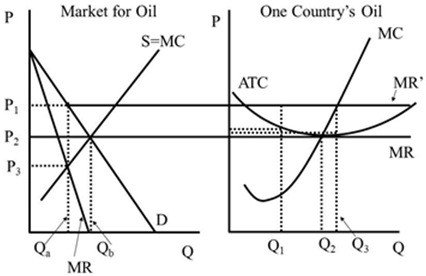Under perfect competition, the price is  Figure 42.2
Figure 42.2
A. P1.
B. P2.
C. P3.
D. 0.
Answer: B
You might also like to view...
The Bubby Gum factory produces bubble gum. Joanne is one of the employees, and she produces 10 packs of bubble gum per hour. Joanne's money wage rate is $12 per hour. If a packet of bubble gum sells for $1.00, then Joanne ________ because ________
A) should recommend that the Bubby Gum company should decrease the price of the bubble gum ; it would sell more and bring a larger profit B) is creating a $2.00 per hour profit for the firm; her real wage rate is more than her output per hour C) is creating a $2.00 per hour loss for the firm; her real wage rate is more than her output per hour D) should ask for a raise in pay; then her real wage would be less than her output per hour E) is the last person the Bubby Gump company will employ; an additional hire would produce equal the amount of additional labor to real wage per hour
Governments,
A) like individuals, face opportunity costs. B) unlike individuals, do not face opportunity costs. C) only if they are relatively poor, face opportunity costs. D) only if they are running budget deficits, face opportunity costs.
In a monopolistically competitive market, social welfare would be enhanced if
a. price equaled marginal cost. b. government regulation eliminated the product-variety externality. c. the government raised taxes to subsidize firms that price below average total cost. d. there were fewer firms, making the industry closer to an oligopoly.
In a typical short-run production function, before diminishing returns set in, the slope of the total product curve
A. is increasing. B. is decreasing. C. rises and then falls before diminishing returns sets in. D. falls and then rises before diminishing returns sets in.